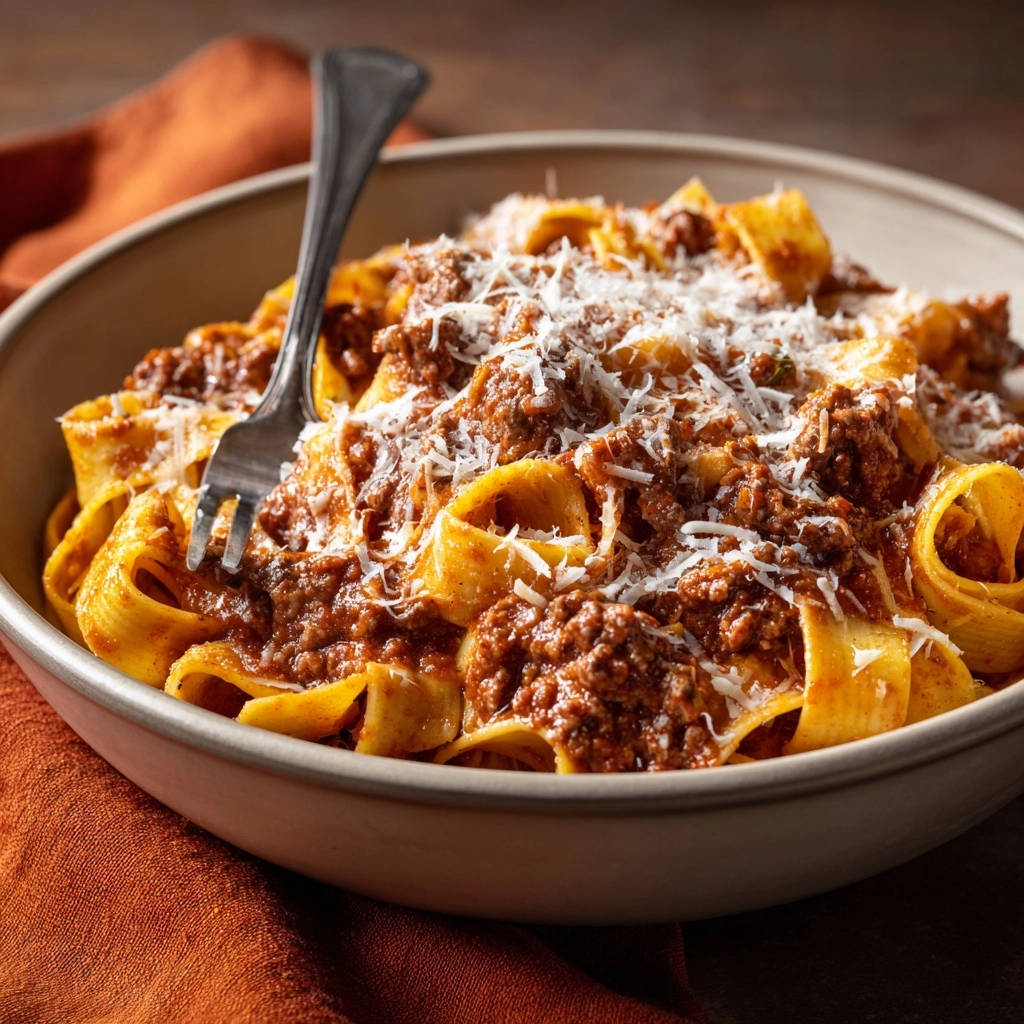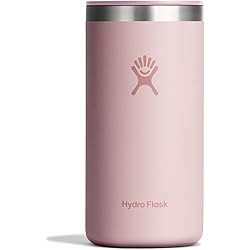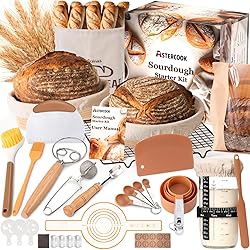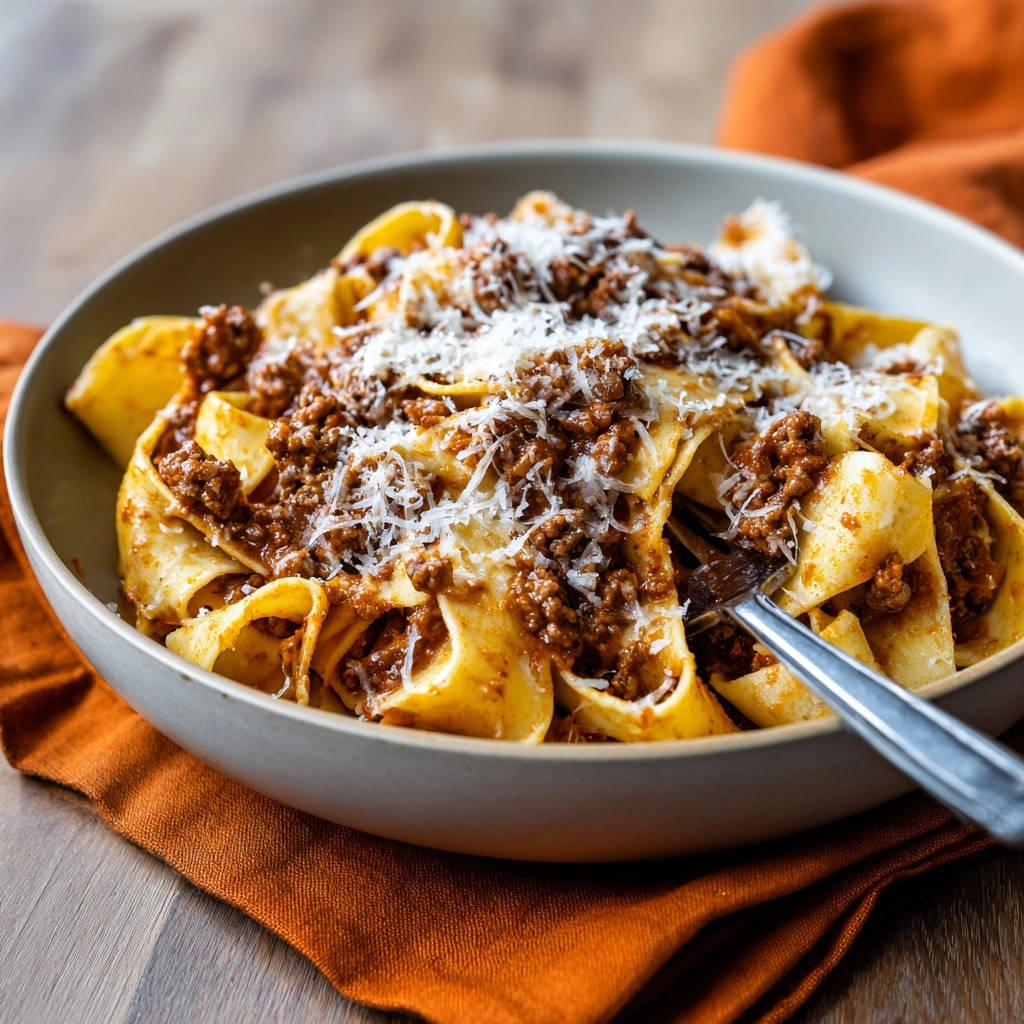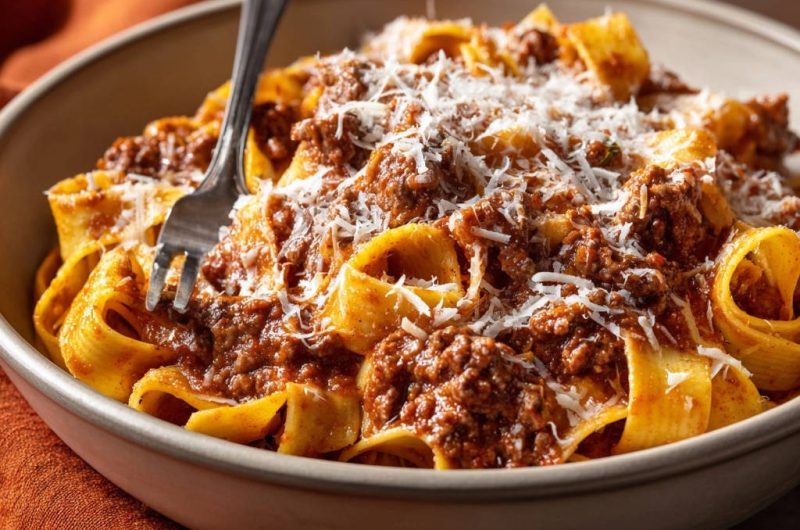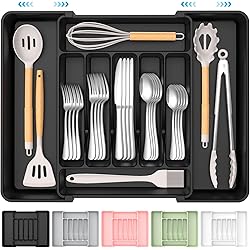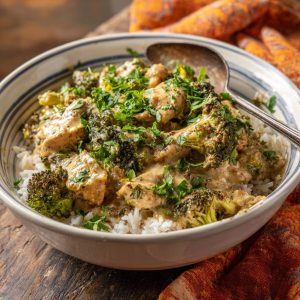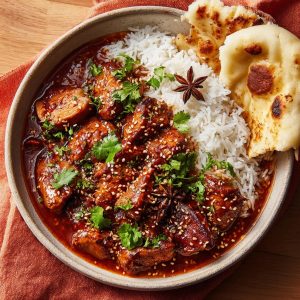KitchenAid Artisan Series 5 Quart Tilt Head Stand Mixer, KSM150PS, Juniper
$479.95 (as of November 2, 2025 08:53 GMT +00:00 - More infoProduct prices and availability are accurate as of the date/time indicated and are subject to change. Any price and availability information displayed on [relevant Amazon Site(s), as applicable] at the time of purchase will apply to the purchase of this product.)Hydro Flask Travel Coffee Cup – Insulated Stainless Steel, Non-Spill, Leak Proof to-Go Tumbler 16 Oz Trillium Pink
$24.95 (as of November 3, 2025 10:05 GMT +00:00 - More infoProduct prices and availability are accurate as of the date/time indicated and are subject to change. Any price and availability information displayed on [relevant Amazon Site(s), as applicable] at the time of purchase will apply to the purchase of this product.)STANLEY Quencher ProTour Flip Straw Tumbler with Leakproof Lid | Built-In Straw & Handle | Cupholder Compatible for Travel | Insulated Stainless Steel Cup | BPA-Free
$26.25 (as of November 3, 2025 10:05 GMT +00:00 - More infoProduct prices and availability are accurate as of the date/time indicated and are subject to change. Any price and availability information displayed on [relevant Amazon Site(s), as applicable] at the time of purchase will apply to the purchase of this product.)Astercook Sourdough Starter Kit with Round & Oval Banneton Bread Proofing Basket, Bread Sling, Starter Jar, Dough Whisk, Scrapers, Stencils, Cooling Rack & Bag Complete Sourdough Bread Baking Supplies
$39.99 (as of November 3, 2025 10:05 GMT +00:00 - More infoProduct prices and availability are accurate as of the date/time indicated and are subject to change. Any price and availability information displayed on [relevant Amazon Site(s), as applicable] at the time of purchase will apply to the purchase of this product.)YETI Rambler 14 oz Ceramic Lined Stackable Mug, Vacuum Insulated, Stainless Steel with MagSlider Lid, Navy
$35.00 (as of November 3, 2025 10:05 GMT +00:00 - More infoProduct prices and availability are accurate as of the date/time indicated and are subject to change. Any price and availability information displayed on [relevant Amazon Site(s), as applicable] at the time of purchase will apply to the purchase of this product.)There’s nothing quite like the disappointment of a rich, homemade Bolognese sauce that simply refuses to cling to your pasta. I’ve been there, but I’ve finally cracked the code to achieve that perfect, deeply flavored sauce that lovingly coats every single strand of pappardelle.
This Pappardelle Bolognese recipe isn’t just about delicious flavor; it’s about a game-changing method that guarantees a luscious, clingy sauce every time, elevating your pasta nights to an art form.
Unlock the Secret: Why This Bolognese Clings Like Magic
This Pappardelle Bolognese recipe stands out not just for its incredible depth of flavor, but for its signature ability to coat every noodle. We’re leveraging time-honored techniques with a crucial “cling secret.”
The Foundation of Flavor: Deep Browning & Aromatics
The journey to an exceptional Bolognese begins with patience. Deeply browning the ground beef creates layers of umami through the Maillard reaction.
Slowly cooking the mirepoix-finely chopped onion, carrots, and celery-builds a sweet, aromatic foundation. This unhurried step is essential for unparalleled depth in the final sauce.
That Special “Cling Secret”: Pasta Water Magic
The true magic of this Pappardelle Bolognese lies in the reserved starchy pasta water. Adding this liquid gold to the sauce with the cooked pappardelle creates a natural emulsion.
The starches from the pasta bind with the rich, reduced Bolognese sauce. This vigorous tossing results in a glossy, irresistible coating that truly hugs every single noodle.
The Patience Pays Off: A Rich, Slow-Simmered Sauce
A great Bolognese sauce is a testament to time. Our recipe calls for a minimum two-hour simmer, allowing the flavors to meld and deepen beautifully.
This slow reduction also thickens the sauce naturally, contributing to its luxurious texture and ensuring it’s ready to cling to the pappardelle pasta.
Crafting Flavor: Key Ingredients for This Bolognese
Every ingredient in this Pappardelle Bolognese plays a vital role in building its signature flavor and texture. Quality choices make all the difference.
The Heart of the Sauce: Quality Ground Beef
We use 1.5 pounds of ground beef for a robust, meaty sauce. An 80/20 lean-to-fat ratio is ideal here, offering rich flavor without excessive grease.
This balance ensures the beef stays tender during the long simmer while contributing essential depth to the Bolognese sauce.
Aromatic Symphony: Building the Flavor Base
The classic mirepoix of finely chopped onion, carrots, and celery forms the aromatic backbone of our sauce. These vegetables slowly release their natural sugars, adding subtle sweetness.
Minced garlic brings its pungent warmth, perfectly complementing the rich beef and tomato base. This aromatic trio builds incredible depth from the very beginning.
Dairy & Tomatoes: The Richness Factor
Crushed tomatoes provide the essential tangy body and vibrant color for this Pappardelle Bolognese. High-quality beef broth adds savory depth, enhancing the overall umami.
Whole milk is a secret weapon in Bolognese. It tenderizes the meat, balances the acidity of the tomatoes, and contributes to the sauce’s characteristic creamy richness.
Choosing Your Pasta: The Pappardelle Advantage
Pappardelle pasta is the quintessential choice for a hearty Bolognese. Its broad, flat, and slightly rough surface is perfectly designed to capture and hold every bit of the rich sauce.
Cooking the pasta to a perfect al dente texture ensures it has a pleasant bite and contributes vital starch to the cling process.
Finishing Touches: Parmesan & Seasoning
Salt and black pepper are essential for seasoning the Bolognese sauce to perfection, enhancing all the other flavors. Taste and adjust as you go.
Freshly grated Parmesan cheese for serving adds a final flourish of salty, nutty flavor and a beautiful creamy texture when it melts into the hot pasta.
Essential Tools for Your Bolognese Masterpiece
Having the right kitchen equipment makes preparing this Pappardelle Bolognese a smooth and enjoyable experience. These tools are key to culinary success.
-
The Perfect Pot: Heavy-Bottomed Pot or Dutch Oven
A heavy-bottomed pot or Dutch oven is absolutely crucial for this recipe. Its excellent heat distribution prevents scorching during the long simmer.
This sturdy cookware ensures the Bolognese sauce cooks evenly, developing rich, consistent flavor without hot spots.
-
Stirring & Tossing: Spoons and Tongs
A sturdy wooden spoon is perfect for breaking up ground beef and stirring the thick sauce. It withstands high heat and won’t scratch your pot.
A good pair of tongs is indispensable for the final step of tossing the pappardelle with the rich Bolognese sauce, ensuring every strand is coated.
-
Measuring Essentials: Cups and Spoons
Accurate measuring cups and spoons are fundamental for following the recipe precisely. This ensures consistency in flavor and texture, leading to a perfect Pappardelle Bolognese every time.
Mastering the Method: A Detailed Guide to Your Bolognese
Follow these steps closely to create a truly exceptional Pappardelle Bolognese with that sought-after clingy sauce.
-
Brown the Beef to Perfection
Heat 2 tablespoons of olive oil in your large heavy-bottomed pot over medium-high heat. Add 1.5 pounds of ground beef, breaking it up with a spoon as it cooks.
Cook until the beef is deeply browned and no pink remains, which is crucial for developing rich flavor. Drain off any excess fat and set the cooked meat aside.
-
Soften the Aromatics for Foundation
Reduce the heat to medium. Add the finely chopped onion, carrots, and celery to the pot. Cook, stirring occasionally, until these aromatics are softened and slightly translucent.
This process takes about 8-10 minutes and slowly coaxes out their natural sweetness, building a deep flavor foundation for your Bolognese sauce.
-
Caramelize the Tomato Paste & Garlic
Stir in the minced garlic and 2 tablespoons of tomato paste into the softened vegetables. Cook for another 2 minutes, stirring constantly.
This step is vital: the tomato paste darkens slightly, caramelizing and intensifying its flavor profile, while the garlic becomes fragrant, but not burnt.
-
Build the Bolognese Base
Return the browned ground beef to the pot. Stir in the 28-ounce can of crushed tomatoes, 1 cup of beef broth, and 1 cup of whole milk.
Season with 1 teaspoon of salt and 0.5 teaspoon of black pepper, or to taste. Bring the entire mixture to a gentle simmer, ensuring all ingredients are well combined.
-
The Long Simmer: Patience for Richness
Once simmering, reduce the heat to low. Cover the pot partially, allowing some steam to escape, and let the Bolognese sauce simmer for at least 2 hours.
Stir the sauce occasionally to prevent sticking. This long, slow simmer is absolutely crucial; it allows all the flavors to meld beautifully, thickens the sauce, and achieves that desirable clingy texture.
-
Cook Your Pappardelle Al Dente
About 15 minutes before the Bolognese sauce is ready, bring a large pot of heavily salted water to a rolling boil. Add 1 pound of pappardelle pasta.
Cook according to package directions until it is perfectly al dente. This means the pasta should be firm to the bite, not mushy. Do not overcook.
-
Reserve That Starchy Pasta Water
Before draining your cooked pappardelle, do not forget this critical step. Reserve about 1.5 cups of the starchy pasta water in a separate heatproof measuring cup or bowl.
This cloudy, starchy water is key to creating the luscious, emulsified sauce. Drain the cooked pappardelle thoroughly after reserving the water.
-
The Cling Secret: Toss & Emulsify
This is the game-changing moment for your Pappardelle Bolognese. Add the drained pasta directly into the pot with the simmering Bolognese sauce.
Add about 0.5 cup of the reserved starchy pasta water. Toss the pasta vigorously with the sauce for 1-2 minutes using tongs. The starch from the pasta water, combined with the rich, reduced sauce, will emulsify.
This creates a luscious, glossy coating that truly clings to every strand of pappardelle. Add more pasta water a tablespoon at a time if the sauce is too thick, ensuring a perfect coating consistency.
-
Serve Immediately with Parmesan
Serve your magnificent Pappardelle Bolognese immediately. Top each generous serving with plenty of freshly grated Parmesan cheese for an extra layer of flavor and indulgence.
Chef’s Secrets: Elevate Your Pappardelle Bolognese Game
Take your homemade Pappardelle Bolognese from excellent to extraordinary with these expert tips.
-
Don’t Rush the Browning
Patience during the initial beef browning is non-negotiable. Allow the meat to achieve a deep, dark brown crust on all sides before breaking it up completely.
This intense browning maximizes the Maillard reaction, unlocking profound savory flavors that form the backbone of a truly great Bolognese sauce.
-
The Power of Freshly Grated Parmesan
Always opt for a block of high-quality Parmesan cheese and grate it fresh. Pre-grated varieties often contain anti-caking agents that can affect texture.
Freshly grated Parmesan melts beautifully into the hot pasta, adding a superior nutty, salty flavor that store-bought versions simply can’t match for your Pappardelle Bolognese.
-
A Touch of Nutmeg?
For an authentic, subtle warmth often found in classic Bolognese, consider adding a tiny pinch of freshly grated nutmeg. It complements the meat and dairy notes beautifully.
A small amount makes a big difference, adding a delicate layer of complexity without overpowering the other flavors in your Pappardelle Bolognese.
-
Adjusting Consistency with Broth or Water
If your Bolognese sauce seems too thick before adding the pasta, you can thin it gradually with a splash of beef broth or water. Do this before the final pasta step.
Conversely, if it’s too thin, simmer it uncovered for a bit longer to allow more liquid to evaporate. This ensures the perfect consistency before the cling secret is applied.
Common Challenges & Simple Fixes for Your Bolognese
Even experienced cooks encounter hiccups. Here are solutions to common Pappardelle Bolognese challenges.
“My Sauce Isn’t Thick Enough!”
If your Bolognese sauce feels too watery, simply remove the lid and continue to simmer it gently. This allows excess liquid to evaporate, naturally thickening the sauce over time.
For a quicker fix, you can mix a teaspoon of cornstarch with a tablespoon of cold water to form a slurry, then stir it into the simmering sauce. Cook for a few minutes until it thickens.
“The Sauce Isn’t Clinging to the Pasta!”
This is often due to skipping or rushing the “cling secret” step. Ensure you’re adding the drained pappardelle directly to the sauce with enough reserved starchy pasta water.
Toss vigorously for a full 1-2 minutes. The combination of pasta starch, a well-reduced sauce, and active tossing is essential for creating that perfect emulsion for your Pappardelle Bolognese.
“My Meat is Dry and Bland”
Dry, bland meat often results from overcrowding the pot during browning. If you have a large amount of ground beef, brown it in two batches to ensure deep, even searing.
Also, make sure you’re seasoning the meat sufficiently with salt and pepper not just at the end, but throughout the cooking process to build flavor layers for your Bolognese sauce.
Beyond the Plate: Perfect Pairings & Serving Suggestions
Elevate your Pappardelle Bolognese experience with thoughtful accompaniments and garnishes.
Classic Accompaniments
A simple, crisp green salad dressed with a bright vinaigrette provides a refreshing counterpoint to the rich Pappardelle Bolognese. Its acidity cuts through the richness beautifully.
Warm, crusty bread or garlic bread is perfect for soaking up any leftover sauce on your plate, ensuring no delicious drop goes to waste.
Wine Pairings for a Gourmet Experience
For a truly gourmet experience, pair your Pappardelle Bolognese with a medium-bodied red wine. A Sangiovese-based wine, such as a Chianti Classico, is a traditional and excellent choice.
Other great options include a Barbera or a lighter Merlot. Their acidity and fruit notes complement the rich, savory sauce without overpowering it.
Garnish for Impact: More Than Just Parmesan
While freshly grated Parmesan is essential, a few fresh basil leaves torn over the top add a pop of color and a fragrant, herbaceous note to your Pappardelle Bolognese.
For an extra touch of luxury, a small drizzle of high-quality extra virgin olive oil just before serving can enhance the dish’s aroma and add a silky sheen.
Make Ahead & Storage: Enjoying Your Bolognese Later
Bolognese sauce is famously even better the next day, making it perfect for meal prep. Its flavors deepen and meld further overnight.
Can I Make Bolognese Ahead of Time?
Absolutely! Bolognese sauce is an excellent make-ahead dish. Prepare the sauce entirely, then let it cool completely before transferring it to airtight containers.
Store the sauce separately from any cooked pappardelle pasta in the refrigerator for up to 3-4 days. This allows the flavors to intensify beautifully.
How to Store Leftover Pappardelle Bolognese
If you have leftover sauce, store it in an airtight container in the refrigerator for up to 3-4 days. For longer storage, the sauce freezes wonderfully for up to 3 months.
If you’ve already mixed the pasta and sauce, store the combined leftovers in an airtight container in the refrigerator and consume within 2 days for best quality. Freezing mixed pasta is generally not recommended as the pasta can become mushy.
Reheating for Freshness
To reheat the sauce, gently warm it in a saucepan over low heat, stirring occasionally. Add a splash of beef broth or water if it seems too thick, to restore its ideal consistency.
If reheating pre-mixed Pappardelle Bolognese, warm gently on the stovetop or in the microwave. A tiny bit of fresh broth or water can help revive the pasta and sauce texture.
Your Pappardelle Bolognese Questions Answered
Here are answers to some common questions about making a truly authentic and delicious Bolognese.
What’s the best type of ground meat for Bolognese?
For this recipe’s robust flavor, 80/20 ground beef is ideal, providing richness without being overly greasy. It browns beautifully and stays tender during the long simmer.
While traditional Bolognese often uses a mix of beef, pork, and veal, sticking to quality ground beef offers fantastic results and adheres to specific dietary preferences.
Why add milk to Bolognese sauce?
Adding whole milk to Bolognese serves several crucial purposes. It helps to tenderize the ground meat, contributing to a melt-in-your-mouth texture.
The milk also balances the acidity of the tomatoes, creating a more mellow and rounded flavor profile. Furthermore, it adds a characteristic creamy richness to the final Bolognese sauce.
Can I use other pasta shapes?
While pappardelle is perfectly suited for its broad surface, other pasta shapes can also work beautifully with this hearty Bolognese sauce. Look for broad, flat, or ridged shapes.
Tagliatelle or fettuccine are excellent alternatives due to their similar wide, flat surface. Rigatoni or penne are also good choices, as their ridges and hollow centers can capture the rich sauce.
Is it possible to make this recipe gluten-free?
Yes, absolutely! To make this Pappardelle Bolognese gluten-free, simply substitute traditional pappardelle with your favorite gluten-free pasta variety.
Ensure all other ingredients, such as beef broth, are certified gluten-free. Most other components of this recipe are naturally gluten-free.
How important is the long simmer time?
The extended simmer time is incredibly important-it’s non-negotiable for an authentic Bolognese. This minimum 2-hour period allows the flavors to truly meld and deepen into a complex, harmonious sauce.
The slow cooking also tenderizes the meat to perfection and reduces the sauce to that ideal thick, rich consistency that defines a perfect, clingy Pappardelle Bolognese.
Your Next Culinary Adventure: Embrace the Cling!
Mastering this Pappardelle Bolognese recipe isn’t just about cooking; it’s about crafting an experience. You now hold the secret to a sauce that truly clings, transforming every forkful into pure delight.
I encourage you to embrace the process, savor the aromas, and relish the satisfaction of creating a truly exceptional Pappardelle Bolognese. Share your culinary triumph and enjoy the cling!
Pappardelle Bolognese
Course: Main CourseCuisine: Italian cuisineDifficulty: easy6
servings25
minutes2
hours120
minutesItalian cuisine
Ingredients
2 tablespoons olive oil
1.5 pounds ground beef
1 large onion, finely chopped
2 carrots, peeled and finely chopped
2 celery stalks, finely chopped
4 cloves garlic, minced
2 tablespoons tomato paste
1 (28 ounce) can crushed tomatoes
1 cup beef broth
1 cup whole milk
1 teaspoon salt, or to taste
0.5 teaspoon black pepper, or to taste
1 pound pappardelle pasta
Grated Parmesan cheese, for serving
Directions
- Heat olive oil in a large heavy-bottomed pot or Dutch oven over medium-high heat. Add the ground beef and cook, breaking it up with a spoon, until deeply browned and no pink remains. Drain off any excess fat and set the cooked meat aside.
- Reduce heat to medium. Add the chopped onion, carrots, and celery to the pot. Cook, stirring occasionally, until softened, about 8-10 minutes. This slow cooking of the vegetables builds a deep flavor foundation.
- Stir in the minced garlic and tomato paste. Cook for another 2 minutes, stirring constantly, until the tomato paste darkens slightly. This step caramelizes the tomato paste and enhances its flavor.
- Return the browned ground beef to the pot. Stir in the crushed tomatoes, beef broth, milk, salt, and pepper. Bring the mixture to a gentle simmer.
- Reduce the heat to low, cover the pot partially, and let the sauce simmer for at least 2 hours, stirring occasionally. The long, slow simmer is crucial here to thicken the sauce and allow all the flavors to meld beautifully. This reduction is key to achieving that clingy texture.
- About 15 minutes before the sauce is done, bring a large pot of salted water to a rolling boil. Add the pappardelle pasta and cook according to package directions until al dente. Do not overcook.
- Before draining, reserve about 1.5 cups of the starchy pasta water. Drain the cooked pappardelle thoroughly.
- The Cling Secret: Add the drained pasta directly into the pot with the simmering Bolognese sauce. Add about 0.5 cup of the reserved pasta water. Toss the pasta vigorously with the sauce for 1-2 minutes. The starch from the pasta water, combined with the rich, reduced sauce, will emulsify and create a luscious, glossy coating that truly clings to every strand. Add more pasta water a tablespoon at a time if the sauce is too thick, ensuring a perfect coating consistency.
- Serve immediately, topped generously with grated Parmesan cheese.

